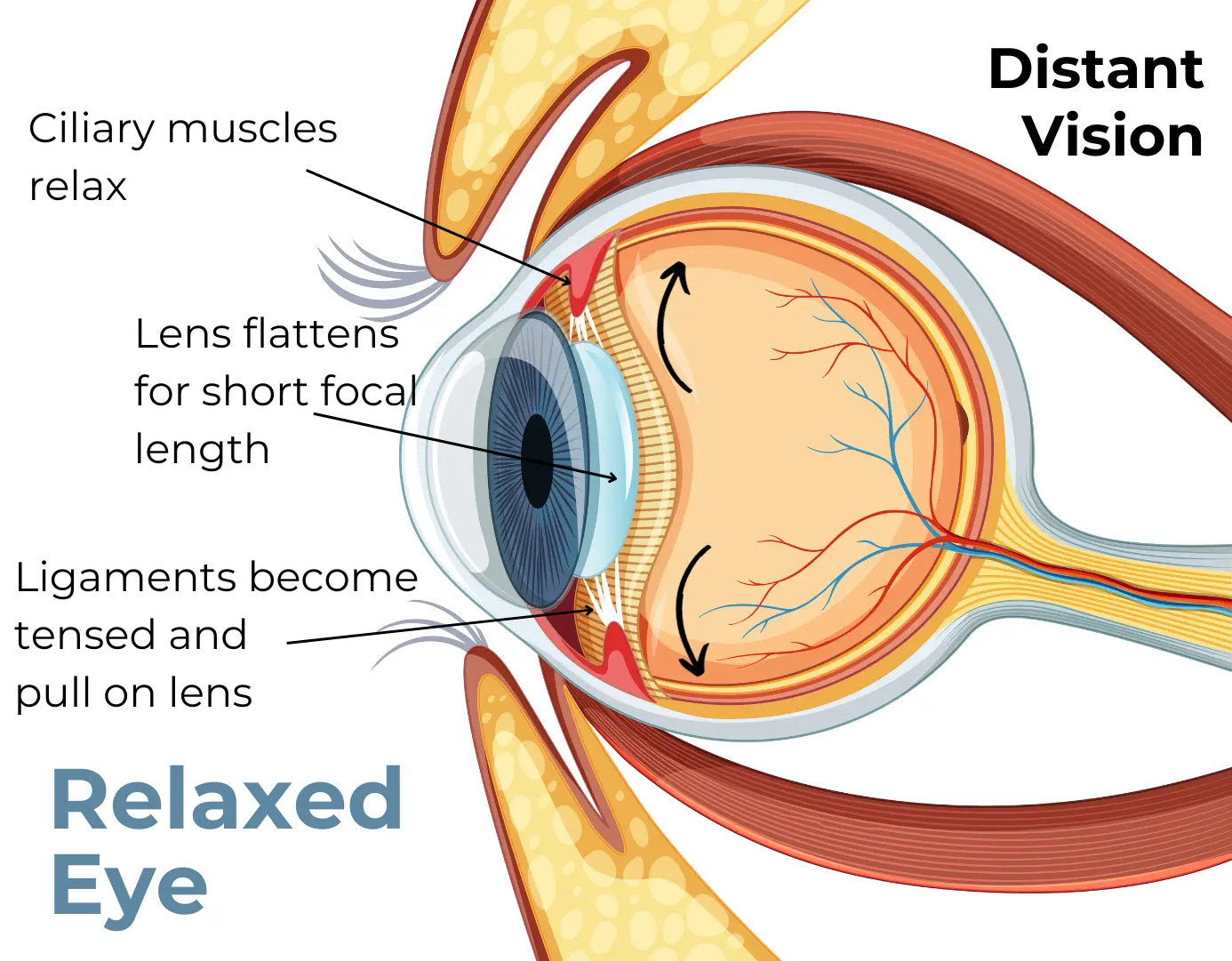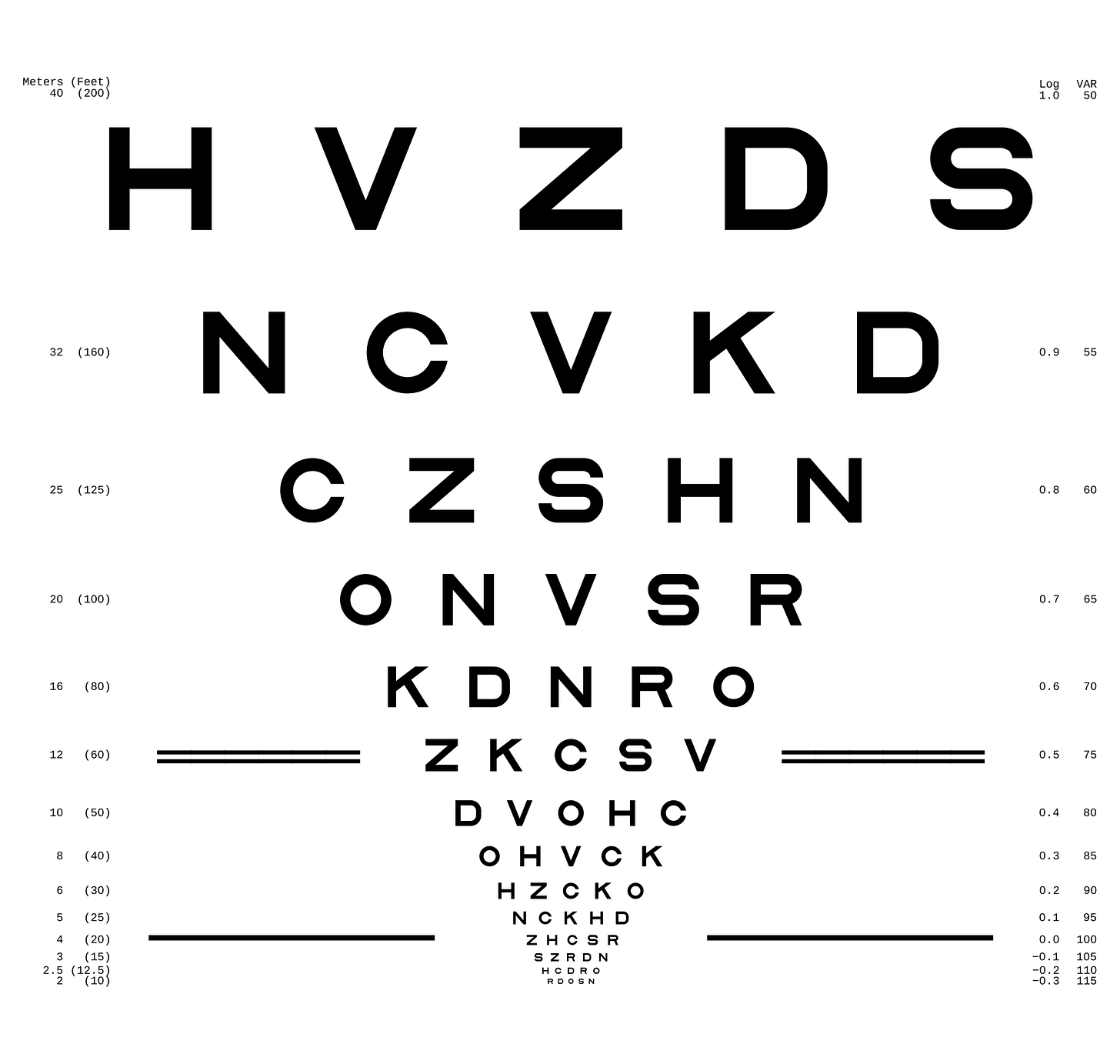LFG: Learning from Games is a series dedicated to making the complex world of video game research just a little easier to understand. I post one about 2-3 times a month in between my Science Shorts and Coming Soon series. LFG #31 is about improving eyesight with a version of the very thing that might have caused it in the first place: video games.
Hello JOMT Reader!
I’ve been wearing glasses for 30+ years now. It’s for nearsightedness — take off my glasses and anything beyond a couple of arm’s lengths away turns into a soft-edged mass of blurriness. A permanent bokeh filter over my eyes.
There are many reasons why someone might have nearsightedness1. I attribute mine to playing on my Game Boy for far too long when I was young. To understand why that might be the case, we’ll need to look deep (well…not that deep) into our eyes and see what’s happening when we look at something far away versus close up.
When you’re looking at something that’s far away, the auto-focus muscles of your eyes, called the ciliary muscles, are relaxed. The relaxed muscles change the shape of the lenses in your eyes to be able to see things that are far away.

On the other hand, when your eyes focus on something close, the auto-focus muscles go to work and flex, thickening the lens to be able to see up close.

Both of these actions by the auto-focus muscles focus the light coming into our eyes on the back of the eye, where the image is formed. That image is then interpreted by our brains.
Nearsightedness happens when the eye has trouble going back to the relaxed state after being in the near-vision state for a long time. It’s like your auto-focus muscles being in a permanent plank — while that is great for your abs, not so for your auto-focus muscles. It means that the light entering your eyes is no longer focused on the back of the eye, resulting in a blurry image.
Glasses and contact lenses redirect the light entering the eye so that it is all focused on the back of the eye. But they don’t do anything to help “re-train” your auto-focus eye muscles. That’s where a group of Japanese researchers stepped in to create a VR game that can re-train your auto-focus muscles so that they don’t have to be in a permanent plank.
🕹️A VR game for your eyes
The goal of the game was very simple. Players were asked to push back targets that approached them by pointing the VR controllers at incoming targets.

Because these targets were moving toward the player, their eyes had to constantly switch between focusing on close targets to push them away and far targets to decide which one to target next.
Switching between near and far targets gets the auto-focus muscles used to moving back and forth between flexed and relaxed. The researchers hypothesized that this switching action would lead to better eyesight. They measured eyesight using the eye test that you’re all probably familiar with, and compared the scores before and after playing the VR game.
👀Eyesight improved after playing the VR game
Before playing the VR game, the 10 participants of this study were, on average, able to see near the solid black line on the test shown below. After the VR game, they were able to see one to two lines below that solid black line, indicating an improvement in eyesight.

Playing longer or more frequently didn’t affect eyesight unless the person had really bad eyesight to begin with. In those cases, playing the VR game actually improved their eyesight more than those who started off with better eyesight.
⚠️The challenges
If this sounds too good to be true, you might be on to something. There are several watchouts when interpreting the data from this study:
The study only included 10 participants. It is far too small a number to make any generalizations about the effect of VR games on eyesight. There is no other demographic information about the participants other than whether they used glasses or contact lenses. Some of these extra details are important because what they do on a day-to-day basis might have a far larger impact on their eyesight than the several hours they might have spent playing this VR game.
There was no “control” group to compare the effects of this VR game to other ways of training the auto-focus muscles of the eye or doing nothing at all. At this point, we don’t know for sure whether these changes were caused by the VR game or whether they are a part of natural variations in our eyesight.
The results are probably skewed by participants with severe nearsightedness. When the researchers grouped participants by severity of nearsightedness (4 participants were classified as having mild nearsightedness; 6 participants had severe nearsightedness), they noticed that the VR game had a bigger effect on those with severe nearsightedness. But with a small number of overall participants, that larger effect is over-represented in the combined data.
🤞🏼The hope
Despite these challenges, I think there’s a future where a part of your eye care routine at the optometrist’s office includes a session of auto-focus muscle re-training. It could even be a part of the waiting room experience: a short, VR training session to help pass the time and improve your eyesight, all at the same time. It can also be combined with games to reduce anxiety for those who are anxious about being in a doctor’s office.
I would happily play a VR game if it helps pass the time and I get bonus improvements in eyesight while doing so!
If you want to read the article that inspired this post and can read Japanese, you can read it here for free: https://www.interaction-ipsj.org/proceedings/2025/data/pdf/3B-50.pdf
Otherwise, a short, English summary of the article can be found here: https://www.ign.com/articles/this-vr-game-developed-by-japanese-scientists-could-improve-your-eyesight
If you liked what you read, please consider giving this post a like and sharing it with your community!
https://www.mayoclinic.org/diseases-conditions/nearsightedness/symptoms-causes/syc-20375556
The Mayo Clinic has some easy-to-read information on nearsightedness or as it is technically known, myopia.








